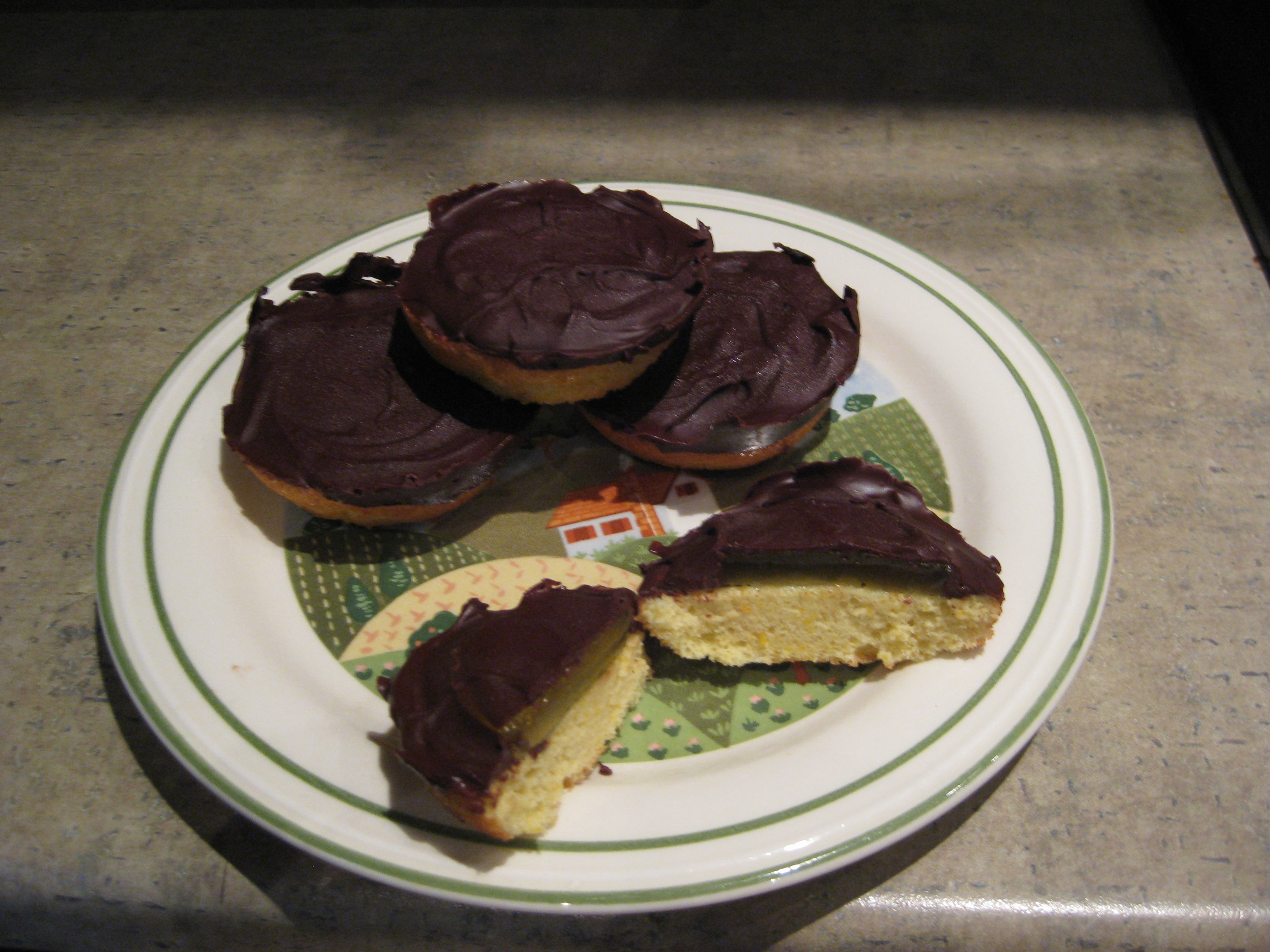Jaffa Cakes for North Americans: an Odyssey
Evelyn and I found a polish bakery in Point St Charles. One of the things we saw (aside from the actual pastries) were packages of Jaffa cakes for sale. I'd never had one before, but they looked good, so I bought one. Indeed, they're pretty awesome. They consist of a sponge-like base, with orange jelly and chocolate on top.
A friend of mine referred me to a web site that showed how to make them. It claimed that the process was dead easy but that's a lie. Specifically, I had a difficult time making what British people call "jelly".
To a Brit, "jelly" is what a North American would call "jello". So when a Jaffa cake recipe calls for orange jelly, what they're really calling for isn't the stuff that you spread on toast, but rather the stuff that you eat for dessert. This is an important distinction - one that I was aware of, thankfully, before I started on this odyssey.
Another important point is that jelly or jello apparently isn't made the same way in the U.K as it is over here. Jelly, in the U.K. seems to come in boxes of concentrated cubes, kind of like soup boullion. The Jaffa cake recipe called for preparing one of these boxes of jelly with half the recommended amount of water.
I can only assume that jelly in the U.K. is alot firmer then the equivalent dessert over here because when I tried this procedure with North American jello, the result was still a gloopy mess that disintegrated at the slightest heat - like, to pick an example out of thin air, the heat from a dollop of melted chocolate that you might put on top.
The sponge bases turned out pretty awful too, as they didn't rise even a little. In the end, my first attempt at making Jaffe cakes could be called a complete disaster - flat, dense, eggy, chewey bases drenched in gloopy, runny jello, with chocolate on top.
But I would not be deterred. Read on to find out how to make a proper jaffa cake.
After looking over what I did, I came to the conclusion that I basically did everything wrong. No, really - at almost every single point where I had to make a choice as to whether something should be done this way or that way, I zigged where I should have zagged.
I used cold eggs on the sponge bases, for example, and they didn't have nearly enough air in them. Here, I should have known better; I've made pound cake lots of times, without baking powder, and the only way to get it to rise is to beat a lot of air into the batter before baking. In practice, I've done this by separating the egg whites from the yolks, beating the whites into a meringue, and then folding them back into the yolks. This is much easier to do with room temperature eggs. I did this with the sponge batter and voila - proper, light, cakey disks.
For the orange jelly, I opted to make my own:
- 1 cup of fresh orange juice
- 1/2 cup of sugar
- 1 teaspoon of citric acid
- 2 packets Knox gelatin
The box of Knox said that one packet of the stuff would set two cups of liquid. Remembering how my first attempt turned out, I took no chances. For my 1 cup of juice mixture, I used two full packets of gelatin. Once the stuff was set in the fridge, I wouldn't exactly have said that it was the consistency of gummi bears...but it was well on its way.
Anyway, this jelly could totally withstand the heat from the melted chocolate. The end result looked like this:
I probably could have clean up the edges a bit, but didn't bother. Also, the jelly itself softened considerably at room temperature. These were actually pretty good. It would be hard for them not to be. I mean, cake, chocolate, orange, what's not to like? I admit, they're not quite as good as store bought Jaffa cakes, but they're an acceptable substitute. Evelyn put it succinctly: they tasted "homemade".

Post a Comment